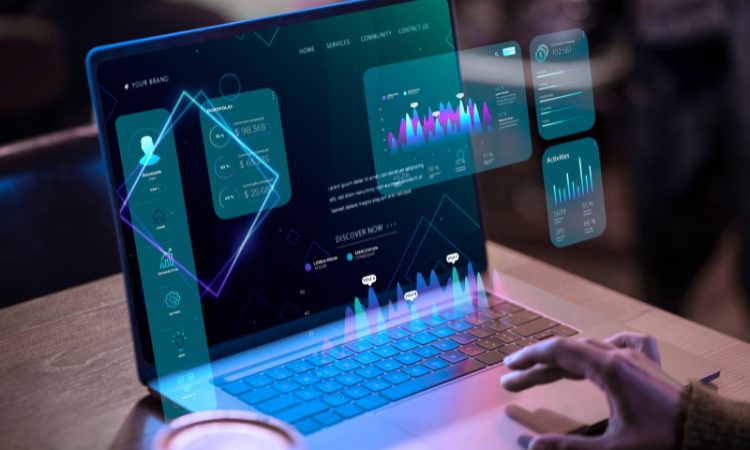Companies love the idea of building custom AI feedback analytics. The appeal is obvious—complete control, perfect alignment with business needs, and the satisfaction of owning something uniquely yours. But here's what most organizations discover too late: 70-85% of AI initiatives fail to meet ROI expectations.
The enthusiasm for custom AI development often blinds teams to the complexities ahead. What starts as an exciting six-month project stretches into a year-long commitment—sometimes longer. Custom models take 1.5x longer to deploy than off-the-shelf solutions, and the upfront investment typically runs $5-6.5 million. Even more concerning, 84% of AI project failures stem from leadership misalignment, unclear goals, or inadequate infrastructure investment.
Most leaders underestimate what goes into developing AI systems that can handle millions of customer interactions. They see the end goal—intelligent feedback analysis, automated insights, real-time sentiment detection—without fully grasping the engineering complexity required to get there.
The build vs buy decision deserves more than wishful thinking. It demands a structured analysis of strategic fit, internal capabilities, timeline pressures, and the true costs that extend far beyond initial development. Model retraining, hallucination management, and ongoing maintenance create expenses that many organizations never see coming.
In this blog, we will walk through a practical framework for making this decision. Whether you're considering building a proprietary solution or evaluating established platforms like Zonka Feedback Intelligence, understanding these factors will help you align your choice with business objectives and available resources. So, let's get started!
TL;DR
- Deciding whether to build or buy AI feedback analytics is a strategic choice, not just a technical one. The right decision impacts speed, cost, and competitive advantage.
- Determine if feedback analytics is core to your business or a supporting capability. Proprietary data and internal AI expertise increase the value of building in-house, while most companies achieve benefits with off-the-shelf solutions.
- Building in-house can take 12–24 months, whereas buying external solutions delivers actionable insights in 3–9 months, reducing missed market opportunities and accelerating ROI.
- Hidden costs like model retraining, security updates, compliance, infrastructure, and maintenance can consume 50–80% of total project costs, making building far more expensive than initially expected.
- Off-the-shelf platforms provide speed, scalability, and predictable pricing. Custom development is only justified when feedback analytics is a core differentiator and proprietary data and AI capabilities exist.
- Zonka Feedback offers real-time sentiment analysis, trend detection, customizable dashboards, and flexible APIs, helping teams extract actionable insights quickly without heavy engineering investment. You can schedule a demo to see how Zonka Feedback transforms customer feedback into business growth!
Set up & Accelerate Your AI Feedback Analytics Journey
Unlock actionable insights from every customer interaction. With Zonka Feedback Intelligence, analyze sentiment, detect trends, and customize dashboards without heavy engineering investment.

Navigating the Build vs Buy Decision for AI Feedback Analytics
Deciding whether to build or buy an AI feedback analytics system isn’t just a technical choice, it’s a strategic crossroads. The right decision can unlock faster insights, better customer experiences, and measurable business growth. The wrong one can drain budgets, delay timelines, and frustrate leadership. This section walks through a practical, step-by-step framework to help you evaluate your options. Let's look at them.
Step 1: Strategic Fit – Is Feedback Analytics Core to Your Business?
Imagine this: your team just invested heavily in building in-house AI feedback analytics. The dashboards look impressive, but after months of development, you ask the critical question: Is this system actually giving us a competitive advantage?
That’s the heart of the make vs buy decision matrix—understanding whether building in-house delivers real strategic value, or if an existing solution can achieve most of the benefits at a fraction of the time and cost.
Does Owning this System Truly Set You Apart?
Moving from basic surveys to real-time sentiment analysis isn’t just a tech upgrade—it’s a strategic transformation. Companies that harness advanced feedback analytics like thematic analysis:
-
Gain tighter operational execution
-
Improve accountability across teams
-
Drive measurable increases in repeat customer behavior
But here’s the real question: will owning this tech create a genuine moat? Experience-driven differentiation has become a business necessity. Modern platforms like Zonka Feedback Intelligence can compare your performance against competitors, highlight strengths and weaknesses, and anticipate customer needs—all without the maintenance burden or hidden costs of building in-house.
Do You have Proprietary Data or Internal AI Expertise?
Your unique datasets often determine whether building software makes sense. Without proprietary data or in-house expertise, the benefits of building AI can vanish:
-
Fine-tuned business context: Custom models understand your industry terminology and customer language better than generic models.
-
Superior output accuracy: Tailored systems produce actionable insights off-the-shelf tools can’t replicate.
Research shows that 61% of AI leaders feel confident managing enterprise data versus just 11% of AI learners [Source: IBM]. Honest assessment of internal resources, data maturity, and expertise needed is critical before committing to in-house production.
Aligning with Your Product Roadmap
Feedback analytics should inform, not drive, every decision. Consider:
-
Is this capability central to your core product or just a supporting tool?
-
Will building in-house divert engineering resources and labor costs from higher-priority projects?
-
Could an off-the-shelf solution deliver 80% of the benefits with 20% of the effort?
Smart leaders weigh qualitative factors and use AI to enhance KPI visibility, cross-functional alignment, and strategic objectives. The key takeaway: only build in-house if feedback analytics is central to your competitive advantage and your team has the expertise, data, and bandwidth to sustain it. Otherwise, buying software like Zonka Feedback Intelligence is often the most cost-effective and time-to-market friendly choice.
Step 2: Capability Audit – Can You Realistically Build It?
Strategic importance only matters if you can actually execute. The gap between wanting to build AI feedback analytics and having the capability to do so is where most organizations stumble. Building AI systems demands specific resources and expertise that many companies severely underestimate.
It’s one thing to say, “We’ll build it in-house.” It’s another to actually deliver. The gap between ambition and execution is where most companies stumble in the make or buy decision.
Do you have the right team and infrastructure?
Building AI feedback analytics isn’t just about smart engineers—it’s about having the right mix of internal resources:
-
Data scientists to design models
-
MLOps and DevOps experts to handle deployment
-
Software engineers to integrate with existing systems
-
UX designers and product managers to make tools usable for business users
Here’s the reality check:
-
Talent costs often eat up 70% of tech budgets.
-
Labor costs rise quickly when projects run longer than expected.
-
Losing a key expert mid-project can stretch timelines by months.
And talent is just one side of the problem. Modern AI systems need to process unstructured data from surveys, chats, reviews, and social media. That means maintaining infrastructure capable of scaling securely and efficiently—while avoiding ongoing maintenance burdens and compliance risks.
What’s your Data Maturity Level?
Most organizations overestimate their readiness. MIT CISR research shows that 28% are just experimenting with AI, 34% are piloting use cases, 31% have industrialized systems and only 7% are truly future-ready.
If your organization is still working through data silos or basic governance, then building software in-house adds unnecessary risk and hidden costs.
How to Evaluate Internal Readiness for AI Development?
A comprehensive capability audit examines three critical dimensions:
-
Technical Assessment: Can your team prepare data for AI consumption? Do they understand model validation, bias detection, and system integration? The gap between knowing Python and building production AI systems is enormous.
-
Data Infrastructure Analysis: AI quality depends entirely on data quality. Map where your feedback data originates, assess its completeness and accuracy, and understand how it flows through your organization. Poor data foundations doom even the most sophisticated models.
-
Skills Inventory: Identify expertise gaps across the full AI development lifecycle—from data engineering to deployment to ongoing maintenance. Consider realistic options for filling these gaps: hiring (expensive and slow), training (time-intensive), or partnering (complex coordination).
Be brutally honest during this audit. Organizations often discover that platforms like Zonka Feedback Intelligence deliver 80-90% of their requirements immediately, allowing internal teams to focus on core business objectives rather than becoming AI infrastructure specialists.
For organizations with advanced AI maturity and unique feedback analytics needs, building might make sense. But only after accurately assessing the full spectrum of capabilities required—not just the exciting model development work, but the unglamorous infrastructure, maintenance, and operational demands that determine long-term success.
Step 3: Time-to-Value – How Fast Do You Need Results?
In AI projects, speed can be the difference between pulling ahead and falling behind. While your team debates architectures and hires talent, competitors using an off-the-shelf solution are already extracting insights and improving customer experience. In today’s market, time to market isn’t a nice-to-have—it’s often the deciding factor between success and expensive failure.
Why Waiting Costs More than Building
Every month you delay, opportunities vanish. A six-month lag in deployment can mean lost revenue, weaker customer retention, and eroded competitive advantage. The brutal truth? The longer you wait, the more insights and market share slip through your fingers.
The gap is widening, too. Generative AI feedback analytics tools are reducing launch times by 5% and boosting productivity by 40%. Companies that implement feedback analytics quickly outperform those stuck in manual analysis. Nobody has the luxury of waiting years for a proof of concept to turn into value.
The Timeline Reality Check
Here’s how the make or buy decision matrix plays out in terms of speed:
Building In-House Timeline:
-
12-24 months to full production
-
Months 1-6: Talent acquisition and infrastructure setup
-
Months 6-18: Model development and training
-
Months 18-24: Testing, optimization, and deployment
Buying External Solutions:
-
3-9 months to deployment
-
Months 1-3: Vendor selection and contract negotiation
-
Months 3-6: Basic integration and configuration
-
Months 6-9: Advanced customization and optimization
The difference is stark. Many organizations realize that while building in-house feels like a path to complete control, the hidden costs, labor costs, and ongoing maintenance burden often outweigh the perceived benefits.
That’s why platforms like Zonka Feedback Intelligence win out. Companies can’t afford to wait years just to show value—especially when 55% cite data quality as a major barrier, and up to 80% of project time gets wasted preparing data instead of analyzing it.
The Hidden Cost of Delayed Insights
Think about a product team manually combing through survey responses to find recurring complaints. By the time the issue surfaces, churn has already hit. Those delays are the true cost of waiting—missed opportunities, frustrated customers, and wasted engineering resources spent patching problems instead of driving growth.
With 30% of AI models failing to scale due to poor integration and maintenance, every delay multiplies risk. Zonka Feedback Intelligence avoids that trap by offering pre-trained models that deliver insights within days, not months—allowing teams to act faster, with fewer blind spots and far lower risk.
Build if you must—but be realistic.
Building may still make sense if you have proprietary data advantages or highly specific customization needs. But leaders need to run a hard cost-benefit analysis of the time-to-value trade-offs. The decision isn’t just about building software—it’s about aligning speed with strategic outcomes.
Step 4: The Real Cost of Building AI Feedback Analytics
Here’s where the build vs buy debate gets real. Many teams underestimate the true cost of building in-house because they calculate AI like a traditional software project. That’s a mistake. AI systems don’t just require upfront investment—they demand ongoing support, security updates, and constant retraining that balloon costs far beyond initial estimates.
The Hidden Truth About AI Development Costs
Building an AI feedback system touches five cost categories that don’t go away:
-
Infrastructure – servers, cloud storage, GPU compute
-
Tools & licensing – ML platforms, APIs, data processing frameworks
-
Upkeep & maintenance – model retraining, security updates, bug fixes
-
Talent – data scientists, engineers, MLOps specialists, compliance experts
-
Regulatory compliance – GDPR, CCPA, explainability features, audits
Here’s the catch: while companies obsess over development costs, the ongoing costs dominate. Research shows:
-
50–80% of lifetime AI cost comes from software maintenance
-
30–50% of initial build costs are repeated every year just to keep AI systems running
-
Annual maintenance alone consumes 15–25% of the original build budget
That’s the true cost often overlooked in the decision making process.
Model Decay: The Silent Budget Killer
Even the smartest AI systems don’t stay sharp forever. In fact, 91% of machine learning models decay over time. Why?
-
Context decay: customer language and market conditions evolve
-
Model loops: retraining on AI-generated content degrades accuracy
-
Operational drift: data environments shift while the model doesn’t
Suddenly, what looked like a one-time project becomes a maintenance burden—requiring more engineering time and budget just to keep results trustworthy.
Security and Compliance: The Non-Negotiable Expenses
Data breaches cost companies an average of $4.88 million. Compliance with GDPR, CCPA, and industry regulations falls entirely on your team—requiring legal fees, security tooling, and additional development for features like explainability.
Supporting an AI system through its lifecycle involves expenses often overlooked during initial planning:
-
Basic system maintenance: $1,000-$5,000 annually
-
NLP updates: $2,000-$10,000 quarterly
-
Security updates: $500-$2,500 monthly
These numbers might seem manageable individually, but they compound. Add infrastructure scaling, talent retention, model retraining, and compliance updates, and the total cost of ownership grows substantially beyond initial estimates.
For organizations with specialized needs and robust AI capabilities, building might still make sense—but only when you've calculated the full lifetime investment. For most companies, established solutions like Zonka Feedback Intelligence prove more economical while delivering comparable results.
Step 5: Why Buying Often Wins – But Not Always
After weighing the key considerations—strategic fit, time-to-value, and the real cost of ownership—most companies land in the same place: buying software is the cost-effective choice. The numbers add up, the ongoing support is built-in, and the decision making process becomes less risky.
But here’s the truth: buying isn’t the only option. In some real world scenarios, custom development still wins. The challenge lies in knowing when.
When Off-the-Shelf Tools Outperform Custom Builds
Pre-built feedback platforms excel when analyzing customer feedback matters for your business but doesn't define your competitive edge. Custom AI projects take 1.5x longer to deploy than off-the-shelf solutions, which makes the choice obvious for most teams. Commercial systems handle the complexity automatically—sentiment analysis, theme detection, automated workflows—delivering value in weeks rather than months.
The advantages stack up quickly: immediate deployment with minimal setup, predictable pricing models, and battle-tested reliability. Teams can focus on acting on insights rather than building the infrastructure to generate them.
How Modern Platforms Offer Flexibility and Control
The old argument against buying customer experience software was simple: lack of flexibility. But today’s platforms have evolved. They’re no longer rigid or cookie-cutter.
-
Custom integrations with your CRM, BI tools, and data pipelines
-
Configurable workflows so teams aren’t locked into “default” processes
-
APIs that allow teams to extend functionality without the heavy engineering time
Think of a global retailer handling thousands of customer comments every day. Instead of building from scratch, they implemented a platform that performed automatic thematic analysis while integrating with their custom dashboards. The result? Fast insights without vendor lock in fears—and without draining engineering resources.
Modern tools adapt to you, not the other way around.
When Building Still Makes Sense for Strategic Control
Custom development remains viable when feedback analytics forms a core competitive advantage and you possess the AI capabilities to execute it well. Building makes sense when:
-
Highly specialized industry requirements: Some industries have unique terminology, compliance needs, or regulatory requirements that generic platforms can't address.
-
Proprietary data advantages: You have unique datasets that provide competitive insights when properly analyzed.
-
Scale justifies the investment: Your feedback volume and business impact are large enough to justify the higher initial costs and longer timelines.
The key word is "and"—you need both strategic importance and technical capability. One without the other leads to failed projects and wasted resources.
Even then, building requires honest assessment of whether owning the technology truly provides strategic differentiation or if a solution like Zonka Feedback Intelligence could deliver similar advantages without the development complexity.
Conclusion
The build vs buy decision for AI feedback analytics isn’t just a technical one—it’s strategic. It’s about where your organization creates value, how fast you can deliver it, and whether your resources should fuel innovation or maintain infrastructure.
Many teams start with the ambition to build in-house for full control, but reality often tells a different story. Continuous model tuning, security updates, and maintenance can consume 50–80% of total project costs, stretching timelines to 12–24 months before seeing meaningful insights. Meanwhile, competitors using ready-to-deploy platforms are already acting on customer feedback in real time.
In today’s market, time-to-value defines success. The faster you can capture and act on insights, the better you can adapt, retain customers, and outperform your competition. That’s why, for most organizations, buying is the smarter path. Modern platforms now offer deep customization, flexible integrations, and scalable AI—delivering 80–90% of what most businesses need without the cost, risk, and delay of building from scratch.
Zonka Feedback Intelligence embodies this balance. It empowers your organizations to analyze unstructured data from surveys, reviews, and chats; identify trends and sentiments automatically; and surface insights that teams can act on instantly. With flexible APIs, robust AI models, and user-friendly dashboards, Zonka Feedback delivers speed, scalability, and precision without vendor lock-in or engineering overload.
Ultimately, the right decision depends on your strategic priorities. If feedback analytics is your differentiator and you have the expertise to sustain it, building might make sense. Otherwise, leveraging a proven platform like Zonka Feedback lets you focus on what truly matters turning feedback into measurable growth.
Ready to accelerate your feedback transformation? You can schedule a demo and see how quickly Zonka Feedback Intelligence can turn insights into impact.
FAQs
Q1. What factors should companies consider before deciding to build or buy AI feedback analytics software?
Businesses should assess four key areas: strategic fit, internal AI expertise, time-to-value, and total cost of ownership. If customer feedback analytics is core to your differentiation and you have the in-house talent to maintain it, building may work. Otherwise, buying a proven AI feedback analytics platform ensures faster insights, lower risk, and predictable ROI.
Q2. How long does it take to build an AI feedback analytics system compared to buying one?
Developing a custom AI feedback analytics solution can take 12–24 months, involving setup, model training, and testing. In contrast, buying and implementing a ready-to-deploy AI customer feedback platform takes as little as 3–9 months, enabling organizations to act on insights faster and reduce opportunity costs.
Q3. What hidden costs are often overlooked when building AI feedback analytics in-house?
Beyond initial development, hidden costs include model retraining, infrastructure scaling, data governance, compliance updates, and security maintenance. Studies show these can account for 50–80% of the system’s lifetime cost, often exceeding the original build budget.
Q4. When does it make sense to build a custom AI feedback analytics platform?
Building is ideal when your organization has proprietary data, mature AI capabilities, and feedback analytics as a core strategic differentiator. If your scale justifies the investment and you can sustain long-term infrastructure and model management, custom AI development can provide unique competitive advantages.
Q5. What are the benefits of buying an AI feedback analytics platform like Zonka Feedback Intelligence?
Off-the-shelf platforms like Zonka Feedback Intelligence offer faster deployment, scalable AI models, and real-time insights without the engineering burden. They integrate easily with your existing tools, minimize maintenance costs, and help teams focus on improving customer experience rather than building infrastructure.











